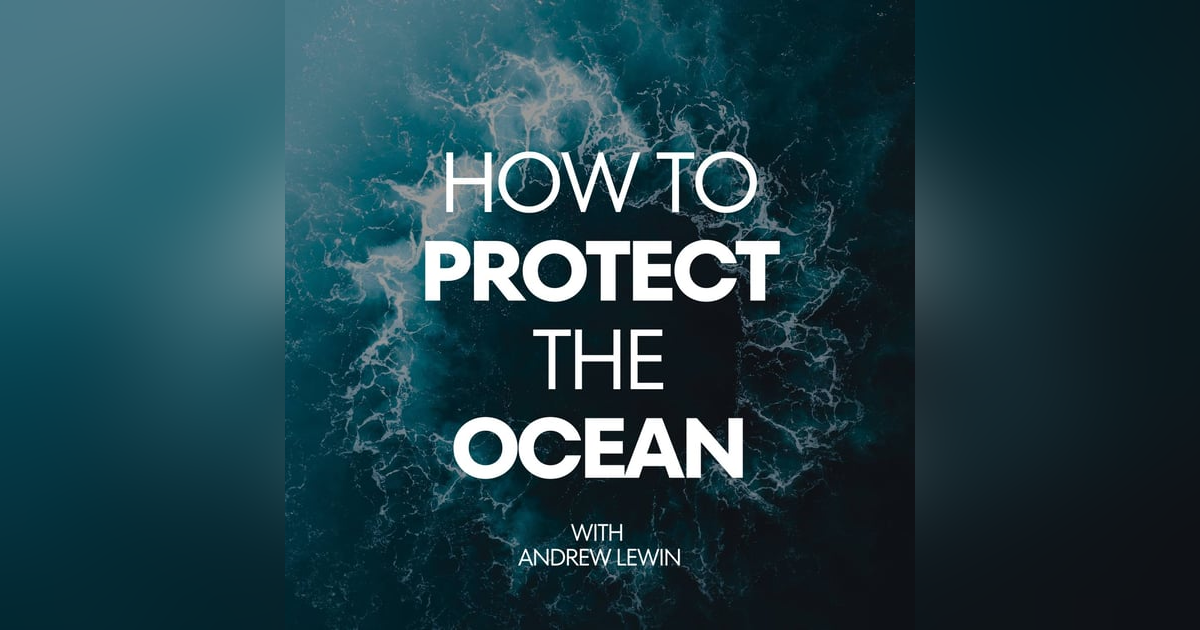Ocean Acidification: Exploring the "Silent" Impact of Climate Change

In this episode of the How to Protect the Ocean podcast, host Andrew Lewin discusses the often overlooked consequence of climate change: ocean acidification. He explains what ocean acidification is, its impact on the oceans, and explores potential...
In this episode of the How to Protect the Ocean podcast, host Andrew Lewin discusses the often overlooked consequence of climate change: ocean acidification. He explains what ocean acidification is, its impact on the oceans, and explores potential solutions. This important issue is rarely discussed in the media, making it crucial for listeners to be informed and take action.
Link to article: https://greencoast.org/ocean-acidification-solutions/
Connect with Speak Up For Blue:
Website: https://bit.ly/3fOF3Wf
Instagram: https://bit.ly/3rIaJSG
Twitter: https://bit.ly/3rHZxpc
In this episode, the host discusses the significance of utilizing alternative modes of transportation, such as walking, cycling, or public transport, to decrease carbon emissions from cars. The host emphasizes that these alternative transportation methods not only benefit the environment but also promote personal health.
While the host acknowledges that electric vehicles (EVs) are a viable option for transportation since they don't consume fossil fuels and therefore don't contribute to carbon emissions, they also encourage the use of walking, cycling, or public transport. These options are not only environmentally friendly but also promote physical activity and overall well-being.
Furthermore, the host highlights the concept of reducing food miles as a means to minimize transportation-related carbon emissions. They suggest consuming locally grown foods and eating locally, as most meals in the US travel over 1,500 miles to reach consumers. By purchasing and consuming local and seasonal food, individuals can reduce the energy and CO2 emissions associated with food transportation.
Overall, the episode emphasizes the importance of utilizing alternative modes of transportation, such as walking, cycling, or public transport, to reduce carbon emissions from cars. It also promotes the idea of eating locally and consuming locally grown foods to minimize transportation-related carbon emissions.
In this episode, the host emphasizes the significance of eating locally grown foods as a way to reduce the transportation of food and the associated carbon emissions. The host explains that most meals in the US travel over 1,500 miles to reach our plates, and this transportation by road, rail, or air consumes energy and releases CO2, with air freight being the most polluting. By choosing to eat locally, such as shopping at farmer's markets or local groceries, individuals can significantly reduce the distance that food needs to travel.
The host emphasizes the benefits of consuming seasonal food that is available in and around our area. By doing so, we can switch to foods that are readily available and do not require long-distance transportation. This not only reduces carbon emissions but also allows individuals to connect with the food in their local communities.
Additionally, the host mentions the concept of "food miles," which refers to the distance that food travels from the farm to the consumer. By reducing food miles through the consumption of locally grown foods, individuals can contribute to reducing the carbon footprint associated with food transportation.
Overall, the episode emphasizes the importance of eating locally grown foods as a way to reduce the transportation of food and the associated carbon emissions. By making conscious choices and opting for seasonal and locally sourced food, individuals can play a significant role in mitigating the environmental impact of the food industry.
In this episode, the host discusses the importance of repair, reuse, and recycling to decrease carbon emissions from manufacturing new products. The host points out that often, items are discarded instead of being repaired due to the high cost of fixing them or the convenience of buying new ones. However, the host emphasizes the need to shift this mindset and prioritize repairing more things, such as iPhones or mobile phones, instead of immediately disposing of them.
By repairing and reusing items, the host explains that we can significantly reduce the amount of CO2 emitted during the manufacturing process of new products. This is because manufacturing new products requires energy and resources, which contribute to carbon emissions. By extending the lifespan of products through repair and reuse, we can minimize the need for new production and therefore reduce the associated CO2 emissions.
Additionally, the host acknowledges the importance of recycling certain items. While recycling is often seen as a solution to reducing waste and carbon emissions, the host acknowledges that it can sometimes be misleading, as not all items are equally recyclable. However, the host encourages listeners to prioritize refusing single-use plastics and other non-recyclable items whenever possible. By refusing and reusing items that are difficult to dispose of, we can further contribute to reducing carbon emissions and protecting natural environments.
Overall, the episode emphasizes the importance of repair, reuse, and recycling as strategies to decrease carbon emissions from manufacturing new products. By adopting these practices, we can extend the lifespan of items, minimize waste, and decrease the energy and resources required for new production, ultimately leading to a more sustainable and environmentally-friendly approach.













